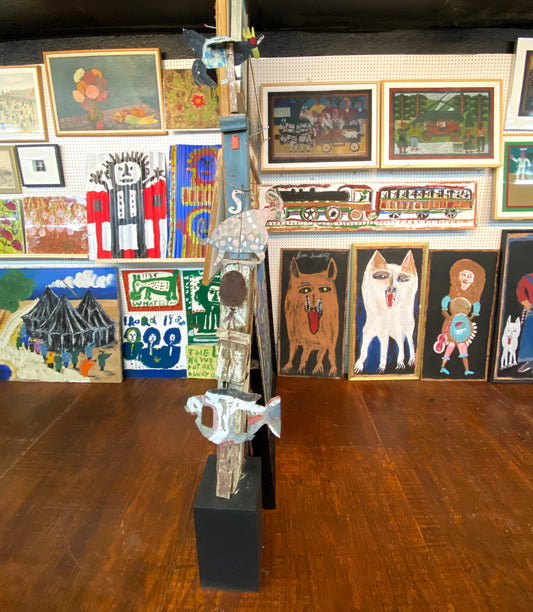First published: Winter 2011
Conventional readings of Thornton Dial’s artwork tend to view Dial’s works on paper as static in subject and as distinct from his three-dimensional art. This is far from the case. The drawings reveal Dial’s evolving use of line and composition as well as a clear relationship to his monumental constructions, and the circumstances of his individual life and the broader American culture.
The medium Dial employs at a given time may well be determined by his current physical or emotional concerns. He created his first drawings in 1990 after an art critic declared that Dial could not draw; the energy of his early compositions reveals his determination to prove the critic wrong.

In both sculpture and drawing, in the early and later works, forms are delineated and bound.
The drawn armature, like the three-dimensional one, structures and enforces his ideas and visualisations, scaffolding each of Dial’s works on paper.
His larger oeuvre constructs visual explorations of American popular culture, current events and historical legacy.
Many of Dial’s drawings comment on this contemporary experience, ranging from the death of Princess Diana, seen in 'The Last Trip Home', (Diana’s Funeral), 1997, to the aftermath of slavery in the United States, considered through 'In the Roosevelt Time': Penned In, 2003.
A skeleton of cultural commentary links individual drawings to his overall body of art, just as the tree in Freedom Cloth connects each bird to a larger scene.
This is an article extract; read the full article in Raw Vision #74




